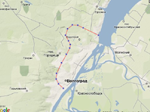Timeline Project Comments

I have implemented a comment stream for each data point in the system. There is still a long list to todos and probably a longer list of bugs, but I feel like I am making some progress:
- I need to a better job of filtering datapoints in the page. Rather than doing a reload from the right hand tag menu.
- I need to scroll the timeline to a data point based on the id.
- I would like the ability to flag data points as offensive,inaccurate. I would like the entry page for each data point to reflect the number of flags.
- I would like to create user badges/achievements based on what the user does in the system. This inspired by the X-Box achievements system via StackOverflow.
- I realised today that it would be handy to do a GeoCoding request based on a city name typed into the edit/create entry forms. I often found myself doing a search on wikipedia, going to the geocoding page and then copy/pasting the latitude, longitude. This could mostly be automated in the form.
- I have clarified the tags for each data point, but they are still not perfect. I need to remove the theater option for The Napoleonic Wars. I also should get rid of the War, it is not really useful.
- I need to clean up the info window dialogs on the map. They are ugly at the moment and they need links to the edit page and discuss page.
- Check out the details for licensing the data as CC WIKI.
Permalink - Comments - Tags: Development,World War Two,Napoleonic Wars
Timeline Project FAQ
So I thought I needed some kind of FAQ to introduce new users to my collaborative Timeline Project. This is something I will build upon over time:
- What was the motivation for the site?
- Where do I signup to contribute?
- Why the Wikipedia link?
- What are the tags for?
- Land - Any combat that involves land based forces (infantry, cavalry, artillary, armour etc...) should include this tag.
- Naval - Any combat that involves naval units should include this tag.
- Aerial - Any combat that involves planes should include this tag.
- Airborne - Any combat that involves airborn troops (paratroopers), should include this tag.
- Domestic - Any event that is purely concerned with the internal infrastructure of a particular country should include this tag.
- Diplomacy - Any event that involves some kind of negotiation between two or more nations should include this tag.
- International - Any event of significance to many nations should include this tag.
What was the motivation for the site?
While digging around in my attic some time late last year, I discovered a fold out Timeline of World War Two that had been a birthday present some years ago. It inspired me to investigate if this sort of information, in this format, was available on the Internet. I discovered that although there is a wealth of websites describing lists of events in great detail (Wikipedia being the most impressive), this particular presentation of the information (a scrolling timeline of events) was either not available or buried so deep in Google that I didn't uncover it.
What I did discover was an amazing programming tool which marries a scrolling dynamic Timeline (almost exactly what I had envisaged) with a Google map. The addition of geographic information to my original concept of a Timeline sealed my fate. Mapping historical events in time and space has become my new obsession.
Where do I sign up to contribute?
You can now sign up for an account and start entering data.
Why the Wikipedia link?
Because of the limited space available for each map point, I wanted to provide the ability to link to a more expansive explanation for the data point. Wikipedia provides, in my opinion, the best collection of articles, maps and documents to describe the data that will be added to the Timeline system. I have mandated the inclusion of a Wikipedia link to ensure that users will always have an easily accessible link to more information if they require it.
What are the tags for?
Probably the most initially confusing aspect of the Creation/Editing User Interface is the addition of tags to new data points. Tags are a set of annotations associated with a data point that allow users of the site to sort the data in useful ways. Tags also include the countries (or states) involved in any data point in the system. Here is the current list of applicable tags and their descriptions:
You will notice that you can apply more than one tag to a data point and you should include any and all tags that are applicable to the data you are adding to the system. The first tag is a special tag that is used to color the entry on the map. You should use the most significant tag first.
More questions/answers coming ...
I still have a list of features that I would like to implement and the project is still very much in BETA. I would appreciate any suggestions or corrections you might have. You can email me at .
Permalink - Comments - Tags: Development,World War Two,Napoleonic Wars,American Civil War
Google Adwords, Small Things amuse..

Thanks to Google and their Stimulus Offer I have seventy bucks of adwords to spend. I am not sure why, but I got a kick out of seeing my ad in sponsored search results. It is probably just a combination of 1am and codeine for back pain.
Permalink - Comments - Tags: Development,World War Two,Google
Timeline Project Community - Open BETA
If you are interested in contributing chronological/geographical data to either:
You can now sign up for an account and start entering data.
I still have a list of features that I would like to implement and the project is still very much in BETA. I would appreciate any suggestions or corrections you might have. You can email me at .
Permalink - Comments - Tags: Development,World War Two,Napoleonic Wars
Sony Service Fail vs Apple Service Win!

I have two colleagues at work (Nick and Brad), both doing development pretty much all the time on their respective laptops and consequently, very dependant on them. Both work on the train for longish commutes and need their batteries to last the trip.
Sad Sony Story
So a few months ago the battery in Brad's Vaio started to die and he contacted Sony about a replacement. Since that time Sony has provided a customer service experience worthy of a paranoid conspiracy theorist's diary. They have been evasive, contradictory, but mostly just unresponsive. Three months later, and with his failing battery giving shorter and shorter operating times, Brad was told that his battery had arrived at head office. He just needed to provide his credit card number and they would send it out. Brad did so and two weeks later has heard nothing, that's right nothing from Sony. Despite multiple emails, Sony has simply ignored him.
Update : Brad did finally get his battery, several weeks after the assurance that it would arrive tomorrow.
Happy Apple Story
A couple of days ago the battery in Nick's laptop started dropping in power alarmingly and so Nick took it into the George St (Sydney) Apple Store. The guys at the Genius Bar plugged an iPhone into the USB port, ran a funky diagnostic app and declared the battery was fried. They promised a replacement within a couple of days. Two days later Nick gets a call and goes down to pick up his brand new battery.
I am usually not prone to writing cranky get off my lawn style letters, but the contrast between these two cases just cried out for some angry walking stick flailing. Not sure what Brad will do next in his quest to get a new laptop battery, but evidently it shouldn't be this hard.
Permalink - Comments - Tags: Development
[First Page] [Prev] Showing page 28 of 41 pages [Next] [Last Page]
 Mastadon
Mastadon Feeds
Feeds Contribute
Contribute